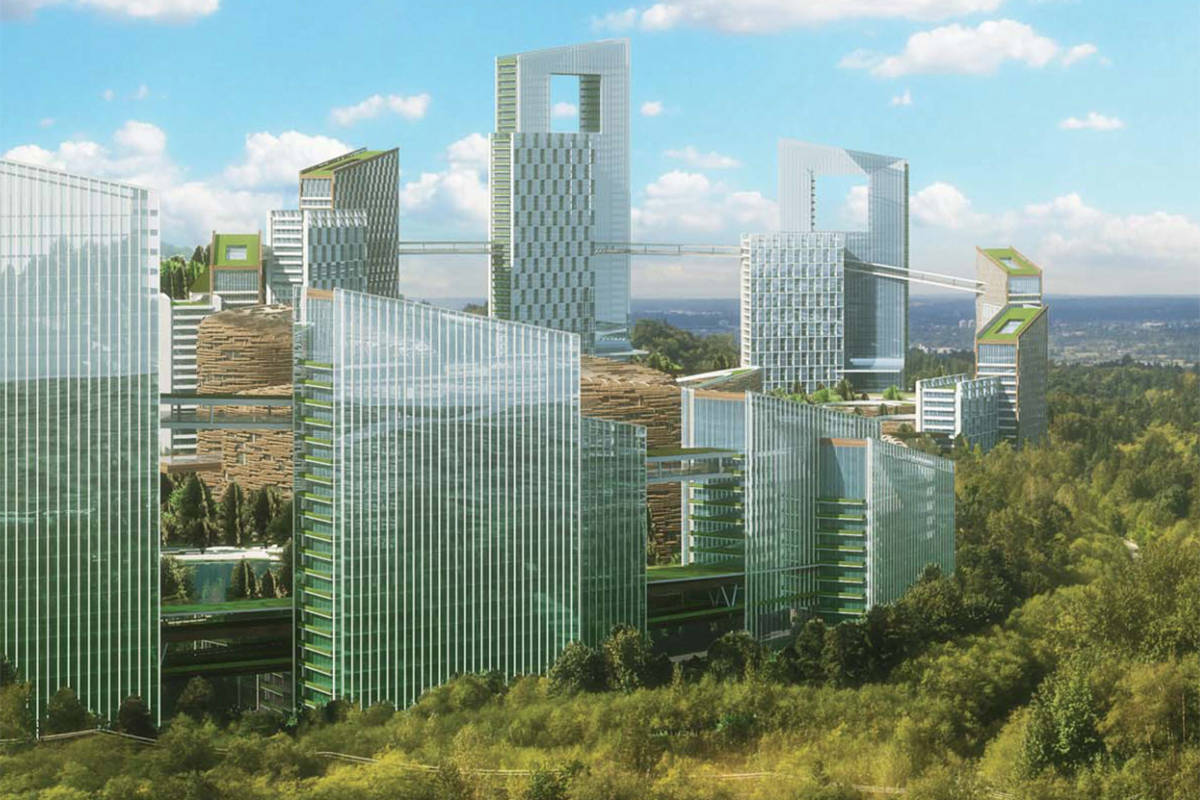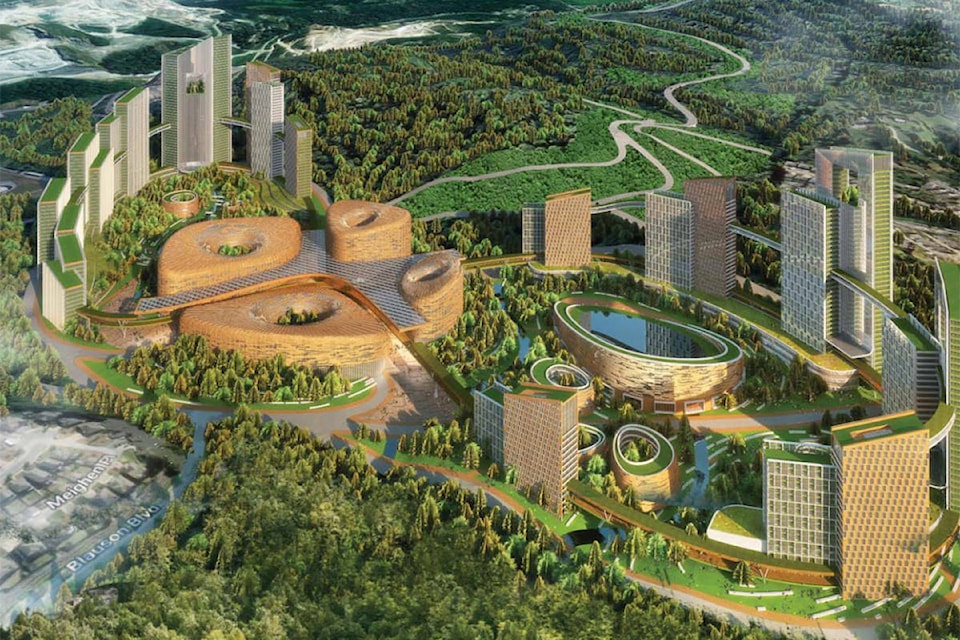There will be no futuristic high-tech city built on the western slopes of Sumas Mountain.
Thirty-thousand people won’t be living in high-rises near Auguston. And there won’t be a high-tech employment hub with more than 15,000 workers a stone’s throw from Ledgeview Golf Course.
Three years ago, such ideas were unthinkable. On Monday, that premise was at the heart of council’s most profound split during Henry Braun’s five years as mayor.
At the centre of the debate was We Town, a conceptual plan by Auguston Town Developments to create a massive high-density mixed-use mini metropolis just south of its Sumas Mountain single-family neighbourhood.
While several councillors suggested that the idea had such transformative potential for residential and economic growth that the city needed to explore it further, Braun vehemently warned that pursuing We Town could starve the city’s commercial core of resources and stimulus, betray developers co-operating with the city, leave council’s credibility in tatters and lead to the excavation of a large chunk of environmentally sensitive land.
In January, the city hired consultant Eric Vance to evaluate the idea. City hall had just received the We Town concept and planners were about to start work on a neighbourhood plan that will plot the future of the next 20 years of residential development on Sumas Mountain and McKee Peak. The McKee Peak area had been slated for modest development that would see the addition of 15,000 new residents over the next 20 or so years. We Town would triple that number of new people, and the likelihood of it becoming a reality would determine the shape of plans for the area.
In October, Vance told council that the idea – if it was built – would be a huge driver of economic growth. But he also said it wasn’t currently viable, left many questions unanswered, and made assumptions – including about the market’s appetite for tens of thousands of small apartments – that may be unrealistic.
RELATED: Planning price tag revealed for futuristic ‘We Town’ concept in Abbotsford
RELATED: 5 reasons why We Town would be a good idea & 5 reasons why it might not work
RELATED: Futuristic development on Abbotsford hillside met with optimism, skepticism
A majority of council voted at the time to include the concept in the planning for the neighbourhood, pending more information on how much time and money that would take. The mayor and Couns. Ross Siemens and Brenda Falk were opposed.
On Monday, staff told council it would cost $675,000 to hire more consultants and expand the scope of geotechnical, archeological and environmental studies of the area. Planning for We Town would delay several other projects slated for 2020.
Those factors, along with other unanswered questions, grew the ranks of the We Town skeptics to include Couns.. Kelly Chahal and Dave Loewen. They joined Braun, Siemens and Falk in voting to leave We Town out of the city’s plans for the McKee area.
The vote came after significant discussion, including a desire by more-optimistic councillors to start with an analysis of the We Town site before full planning work gets underway.
In the end, Couns. Sandy Blue, Bruce Banman, Les Barkman and Patricia Ross were left in the minority as council voted to shelve the idea.
While those four said they didn’t like the delays to other projects, they said the concept warranted worth further exploration.
“These are high-tech jobs that this project is prepared to bring to our city,” Banman said. “And trust me, if they don’t bring it here, they’re going to try to bring it somewhere else.”
Blue said certainty was needed about the land, but the concept as a whole had merit.
“I believe this is the right thing to do over the long term.”
Braun and Siemens, though, cited the proposal’s shift from the 2016 Official Community Plan (OCP) that was focused on densifying core areas of the city. They both pointed out that Vance said the concept “would essentially be a second city centre in Abbotsford seven miles (11 kilometres) from the existing City Centre.”
Siemens said: “By accepting this and moving forward with this, we’ve actually taken a huge direction change from our Official Community Plan.”
Braun spoke for more than 20 minutes on the subject, his longest council speech as mayor. He warned costs could grow to $100 million if the proposal became a reality and that infrastructure needed to be built to support the development.
He and Falk warned that if work began on the project, but couldn’t be finished, Sumas Mountain could be left with a huge scar. The city, meanwhile, could be on the hook for ongoing costs.
And Braun warned that Abbotsford’s existing commercial core – the densification of which is central to the OCP – would be sapped of energy, attention and infrastructure money.
Braun said just considering We Town would set a dangerous precedent, and could trigger other developers to propose large, high-density projects in outlying parts of Abbotsford.
Council had been warned, Braun said, that developers would test politicians’ resolve to stick with the plan.
“This is one of those tests. Will we stick to the overarching principles of the OCP, or will we chase after something that has the potential to destroy the vision for our current city centre?”
Chahal and Loewen both said they had wanted more information on the costs of pursuing the concept, and that the resulting costs and delays were worrying.
“I’m hesitant,” Chahal said. “I think a project of this magnitude requires a lot of resources … and this time might not be the right time for it.”
In October, Loewen had said, “I don’t want to say no this early in the game,” given the potential scale of the project, although many questions remained.
Having “done some reflecting” and with the costs before him Monday, Loewen said the idea had too many risks and costs associated with it.
“While the proposal before us holds out some tantalizing potential for our city, it’s also based on a number of significant assumptions that, in my opinion, would be too costly to verify.”
Do you have something to add to this story, or something else we should report on? Email:
tolsen@abbynews.com
@ty_olsen
Like us on Facebook and follow us on Twitter

